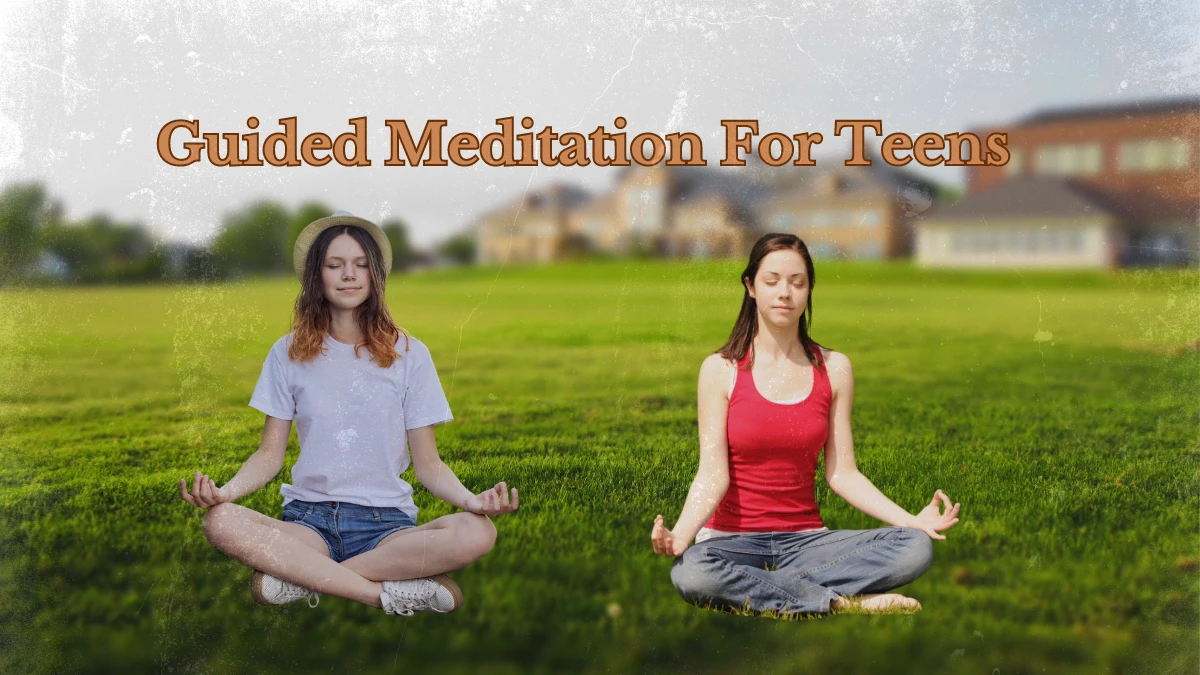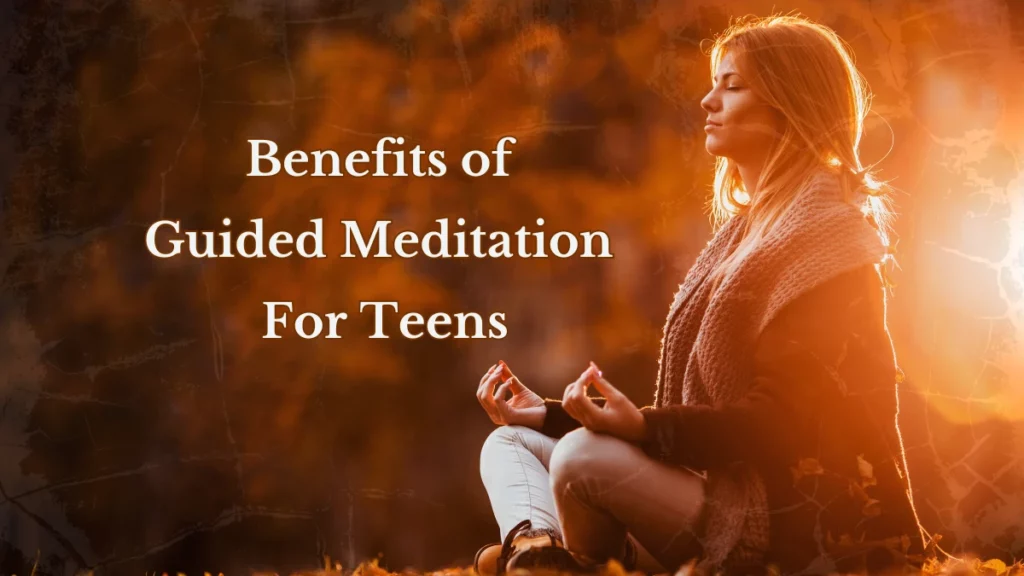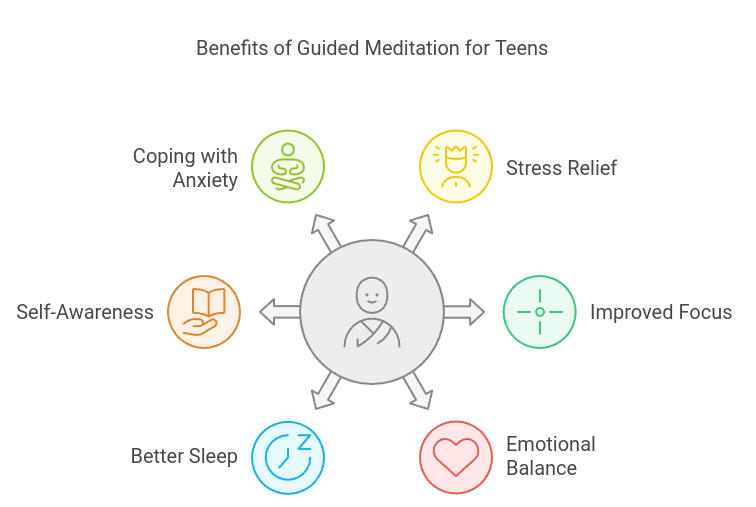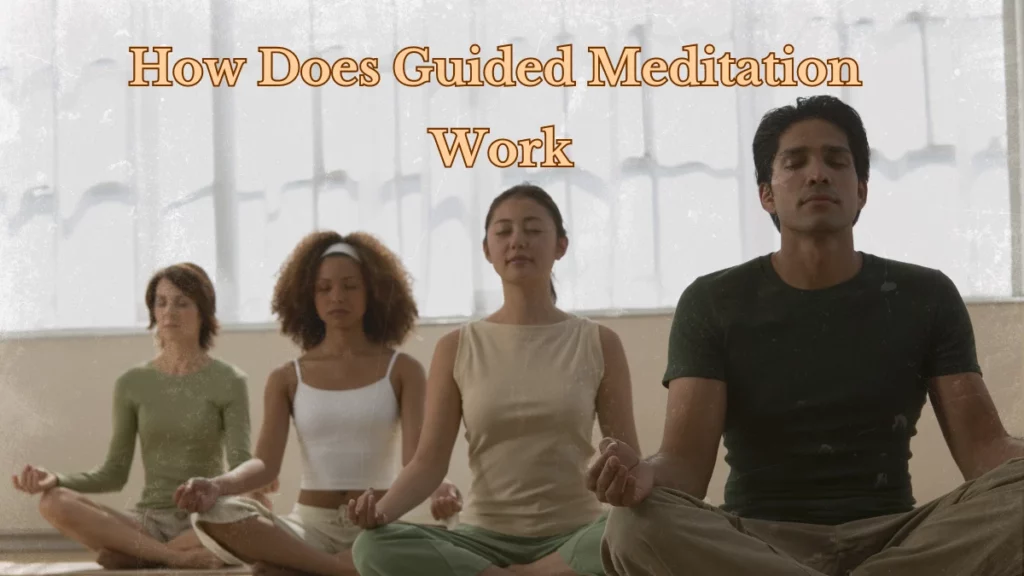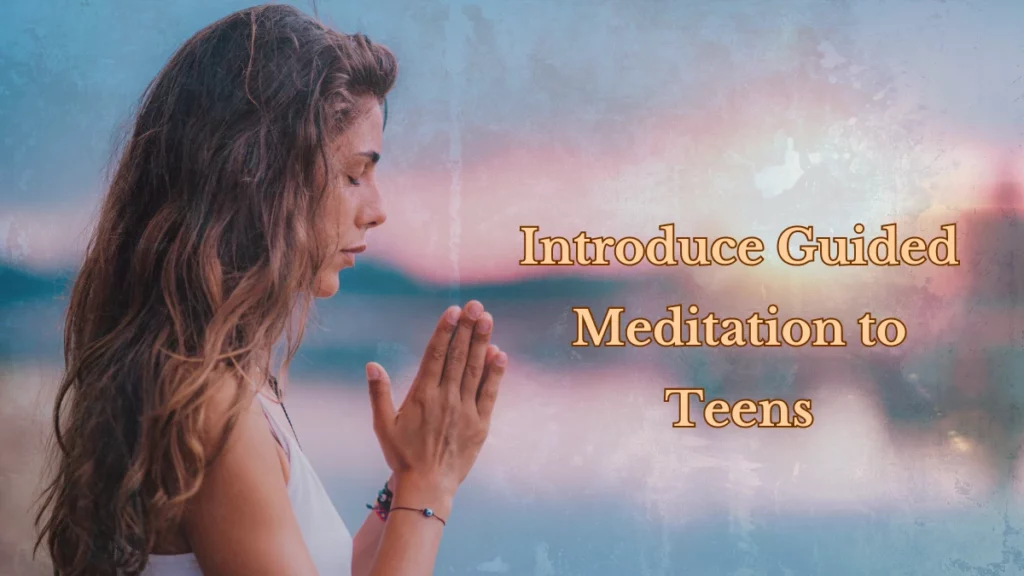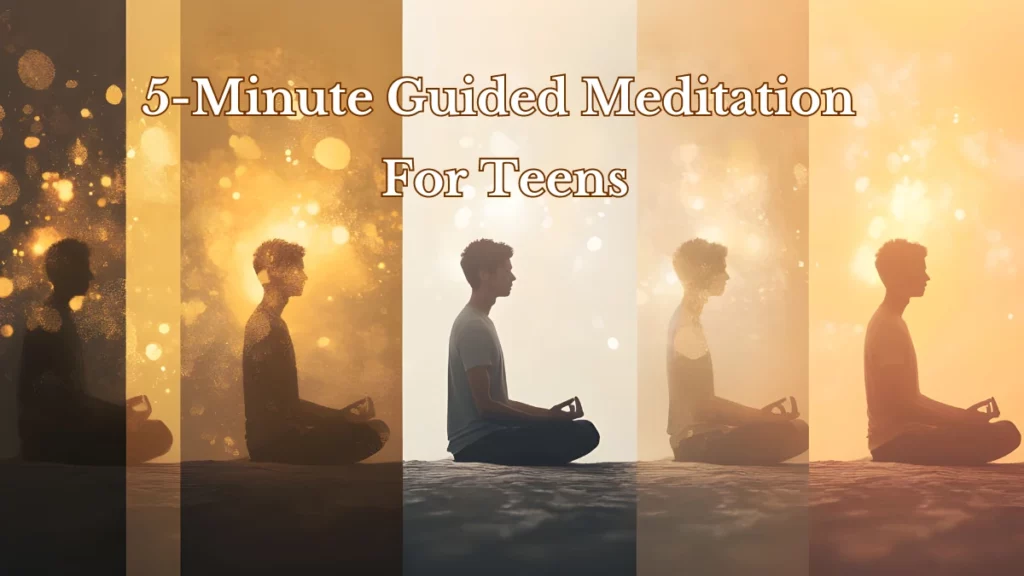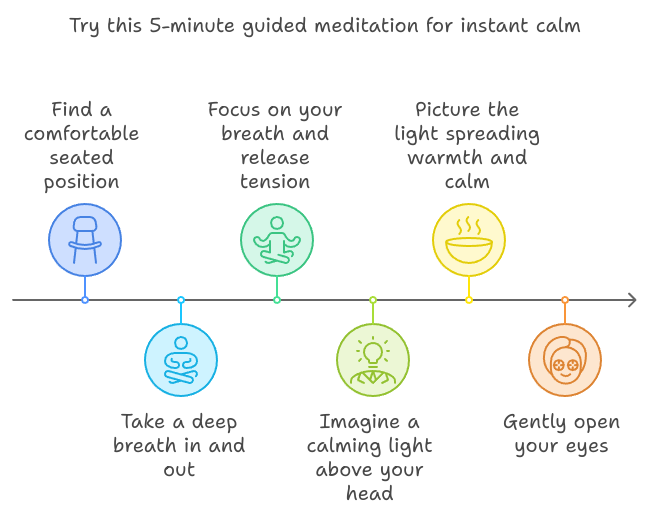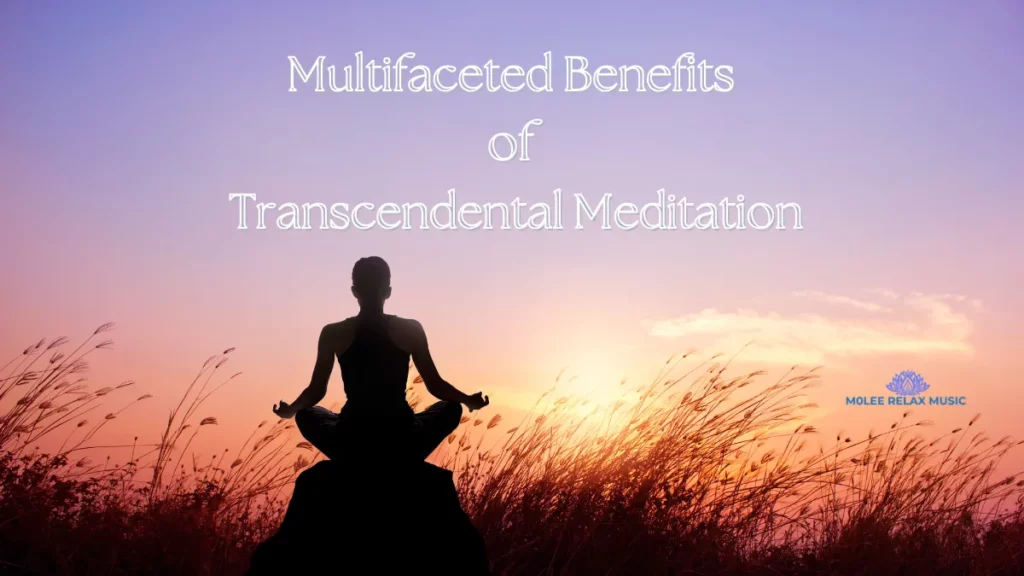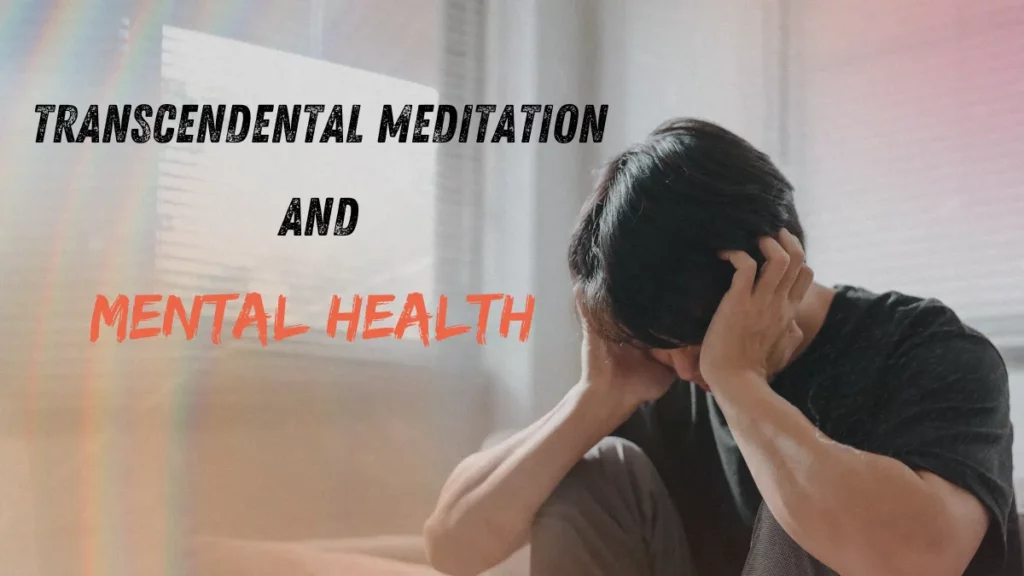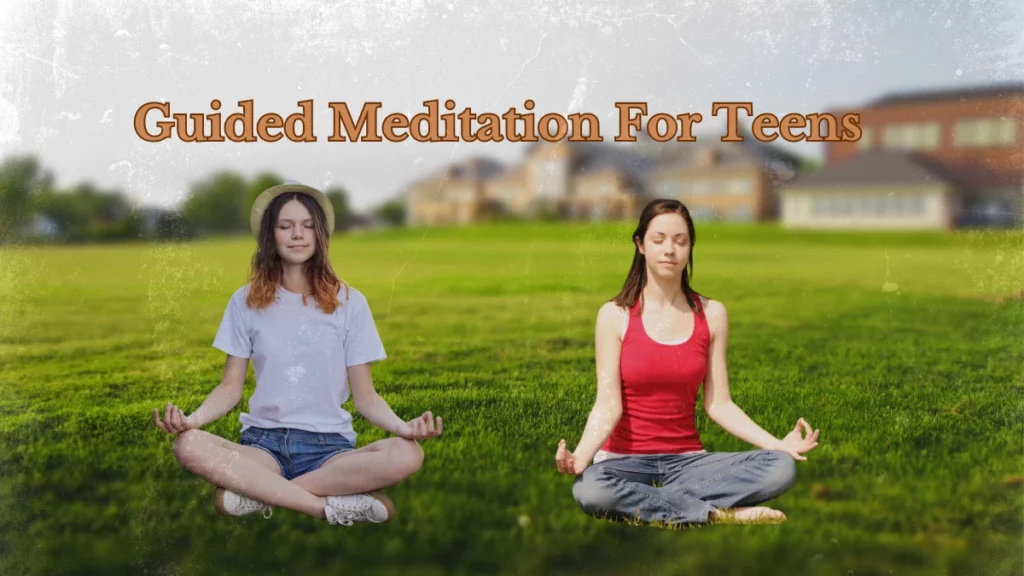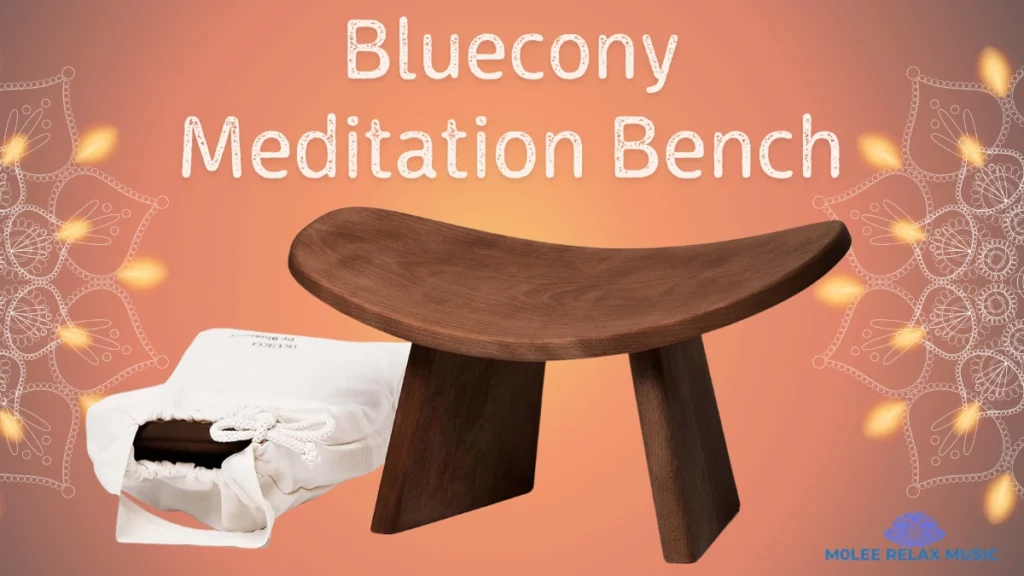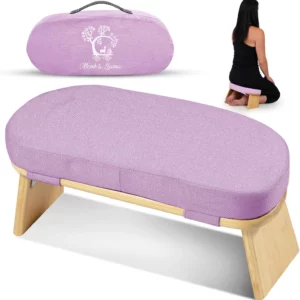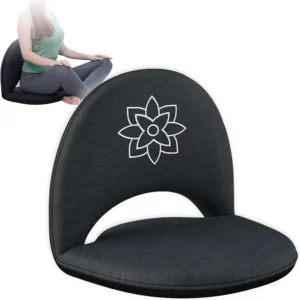Ever feel like life’s constantly pulling you in a hundred directions?
School, friends, social media—it can all feel a bit much. If you’ve ever wished for a moment to just breathe, you’re not alone. More and more teens are turning to meditation to find peace in the middle of all the chaos.
Guided meditation is becoming one of the go-to methods for teens to cope with everyday stress, anxiety, and emotional overload. Whether it’s academic pressure, friendship drama, or simply feeling overwhelmed, meditation can provide that much-needed mental break.
And the best part? You don’t need hours of free time to see its benefits. You can begin with as little as five minutes!
But why exactly is meditation gaining popularity among teens?
Well, it’s simple—meditation works. It helps you slow down, clear your mind, and handle life’s challenges with more ease and clarity.
This blog post will walk you through the incredible benefits of guided meditation for teens, show you how to get started, and offer tips for making it a daily habit. Let’s dive in.
Key Takeaways
- Key Takeaways
- The Benefits of Guided Meditation for Teens
- What is Guided Meditation for Teens and How Does It Work?
- How to Introduce Guided Meditation to Teens
- 5-Minute Guided Meditation for Teens: Scripts and Resources
- Guided Meditation for Teens with Specific Challenges
- Best Resources for Guided Meditation for Teens
- FAQs on Guided Meditation for Teens
- Conclusion
The Benefits of Guided Meditation for Teens
If you’re wondering why meditation has become so popular with teens, the answer lies in its multiple benefits.
When you’re feeling overwhelmed by life, meditation offers a way to press pause and reset. And it doesn’t stop there; meditation can also help improve various aspects of your mental and emotional well-being. Here are the key benefits:
- Stress Relief: One of the most noticeable benefits of guided meditation is stress relief. As a teen, you deal with many stressors—homework, social expectations, extracurricular activities, and more. Guided meditation helps to manage that stress by calming the mind and reducing the physiological effects of stress, like rapid heart rate or shallow breathing.
- Improved Focus: Ever find your mind wandering while you’re trying to study? Meditation can sharpen your focus. By training your brain to return to the present moment, it becomes easier to stay focused on tasks—whether it’s acing an exam or finishing a project.
- Emotional Balance: The teenage years can be an emotional rollercoaster, from feelings of sadness or anger to moments of joy and excitement. Meditation helps regulate these emotions, making it easier to stay balanced when life gets tough. This emotional control can have a positive impact on your relationships, self-esteem, and overall happiness.
- Better Sleep: Struggling with insomnia or restless nights? Guided meditation can also improve your sleep. By calming your mind before bed, you’re more likely to fall asleep faster and enjoy a deeper, more restful sleep.
- Enhanced Self-Awareness: Meditation encourages you to take a step back and observe your thoughts and feelings without judgment. This self-awareness can help you better understand your emotions, reactions, and patterns of behavior, ultimately leading to personal growth and emotional intelligence.
- Coping with Anxiety: Anxiety is common among teens, with rising academic and social pressures. Guided meditation provides a practical way to manage anxious feelings, teaching you how to slow down, breathe deeply, and let go of racing thoughts.
When practiced regularly, these benefits create a strong foundation for mental health and well-being, empowering you to handle life’s challenges with more confidence and calm.
How Meditation Reduces Stress and Anxiety in Teens
Teenagers today are dealing with higher levels of stress than ever before. Whether it’s school deadlines, sports commitments, or social media pressures, life can feel overwhelming. But that’s where meditation comes in.
Guided meditation helps by:
- Tapping into your parasympathetic nervous system: This is the part of your nervous system responsible for calming you down. When you’re stressed, your body goes into “fight or flight” mode—your heart races, muscles tense up, and you may even feel a little shaky. Meditation helps flip the switch, activating the parasympathetic system, which calms everything down. You’ll breathe slower, your heart rate will drop, and you’ll start to feel more relaxed.
- Mindful breathing: One of the most common techniques in meditation is focused breathing. When you’re stressed, taking a few deep breaths can help reset your nervous system and bring you back to a more centered state of mind. Focusing on your breath is an easy, go-to technique for calming down in the middle of a busy or overwhelming day.
- Rewiring your brain: Believe it or not, regular meditation can change how your brain functions. Studies have shown that it increases activity in the prefrontal cortex, the part of your brain responsible for decision-making and emotional regulation. Over time, this helps you respond to stress in a calmer, more collected way.
- Learning to let go of perfectionism: Stress often comes from striving to be perfect—whether it’s in school, sports, or friendships. Guided meditation can help you practice self-compassion, allowing you to be kind to yourself even when things don’t go perfectly.
Stress and anxiety don’t have to rule your life. Even a few minutes of guided meditation each day can drastically improve your ability to cope with these challenges. The more you practice, the better you’ll get at managing those overwhelming feelings.
Enhancing Focus and Academic Performance
Ever sit down to do homework, only to realize you’ve been staring at the same page for 10 minutes without absorbing a single word? Or maybe you find yourself daydreaming in class, missing out on important information. This is where meditation can help.
Guided meditation strengthens your ability to focus. When you practice meditation, you’re essentially training your mind to stay present. Instead of getting lost in distracting thoughts, you’re learning to return your attention to the task at hand. Over time, this increased focus translates into better academic performance.
Here’s how meditation can help you stay sharp and on top of your studies:
- Improved concentration: Meditation teaches your brain to focus on one thing at a time. By learning to gently bring your attention back to your breath or a calming voice during guided meditation, you’re also training yourself to stay focused when studying or working on assignments.
- Enhanced memory: Research shows that meditation can improve your working memory, which is crucial for school. With better memory retention, you’ll be able to recall information more easily during tests or exams.
- Reduced procrastination: Do you often put off homework until the last minute? Meditation can help reduce procrastination by making it easier to start tasks without feeling overwhelmed. By breaking the habit of overthinking or avoiding tasks, you’ll be able to dive into your work with a clearer, more focused mind.
What is Guided Meditation for Teens and How Does It Work?
Guided meditation is exactly what it sounds like—a meditation session where a teacher or app guides you through the process. Unlike silent meditation, where you’re left alone with your thoughts, guided meditation provides step-by-step instructions on how to focus, relax, and let go of stress.
Here’s how it works:
- The guide: In a guided meditation, a teacher or audio recording leads you through the session. They’ll ask you to focus on specific things—like your breath, a body scan, or visualizations. You can follow along, making it easier to stay focused, especially if you’re new to meditation.
- Breathing: Many guided meditations start with deep breathing exercises. You’ll be asked to inhale slowly, hold your breath for a moment, and then exhale. This helps slow down your heart rate and relax your mind.
- Visualization: A popular guided meditation technique is visualization, where you’re asked to picture a peaceful scene, like walking through a forest or lying on a beach. This technique is great for reducing stress and helping you feel more grounded.
- Affirmations: Some guided meditations use positive affirmations, which are simple, uplifting statements like “I am calm” or “I can handle anything.” Repeating these affirmations helps rewire your brain for positivity and resilience.
Guided meditation is accessible and easy to try, even if you’ve never meditated before. It’s like having a personal coach to help you relax and focus, making it an excellent tool for teenagers.
Understanding the Basics of Meditation including Mindfulness and Gratitude
To get the most out of guided meditation, it’s helpful to understand some basic meditation techniques:
- Breathing Techniques: Focus on your breath. Whether you’re inhaling deeply or practicing a more structured breathing pattern (like the popular 4-7-8 technique), paying attention to your breathing is a simple way to center yourself.
- Body Scan: This technique involves mentally scanning your body from head to toe, paying attention to any areas of tension. As you go through each body part, you consciously relax your muscles.
- Mindfulness: Mindfulness is about paying attention to the present moment without judgment. In mindfulness meditation, you might focus on your breath, sensations in your body, or sounds around you, gently bringing your mind back to the present when it starts to wander.
- Gratitude Meditation: This involves focusing on the things you’re grateful for, which can instantly boost your mood and reduce stress.
These basics are easy to pick up and can be practiced anywhere—whether you’re at home, in school, or even on the bus!
Short Guided Meditations for Teens
You might think you don’t have time for meditation, but that’s where short guided sessions come in handy. Even a quick 5-minute session can help you reset and refocus, making it perfect for busy teens. You can do it:
- Before a big test: A short meditation can help you calm pre-test nerves and get into a focused mindset.
- Before bed: A 5-minute guided meditation can help you wind down and prepare for restful sleep.
- During a study break: Taking a few minutes to meditate during study breaks can refresh your mind and prevent burnout.
Many meditation apps and YouTube channels offer short, guided meditations specifically designed for teens. These are easy to fit into your schedule and can have a significant impact on your overall well-being.
How to Introduce Guided Meditation to Teens
Parents, teachers, or even peers might wonder how to encourage teens to try meditation. The trick? Make it relevant and fun. Here’s how you can introduce meditation in a way that resonates:
- Highlight the benefits: Teens are more likely to stick with meditation if they know how it can help them with school, relationships, or sleep.
- Use technology: Apps like Headspace and Calm make meditation accessible and engaging. These platforms offer guided meditations tailored to teen issues, making the practice more relatable.
- Start small: Encourage teens to begin with short, manageable sessions. This removes the pressure of needing to meditate for long periods and helps build the habit.
By keeping it simple and showing teens how meditation fits into their busy lives, it becomes easier for them to give it a try.
Encouraging Teens to Meditate Regularly
Building a meditation routine doesn’t happen overnight, but with the right strategies, it can become a habit that sticks. Here are a few tips to encourage teens to meditate consistently:
- Make it a morning ritual: Starting the day with meditation sets a positive tone for the rest of the day. Even a quick 5-minute session can help teens feel more prepared and focused.
- Link meditation with existing habits: Encourage teens to meditate right after something they already do, like brushing their teeth or getting home from school. This “habit stacking” technique makes it easier to remember to meditate.
- Track progress: Some apps allow you to track your meditation streaks, which can be a fun way to stay motivated. Seeing how many consecutive days you’ve meditated can give teens a sense of accomplishment.
Consistency is key to unlocking meditation’s full benefits, so start small and stick with it.
Creating a Meditation Space for Relaxation
Your environment plays a big role in how relaxed and focused you feel during meditation. While you don’t need anything fancy, creating a peaceful space can make your meditation sessions more enjoyable. Here are some tips for setting up your meditation area for relaxation:
- Find a quiet spot: Whether it’s a corner of your bedroom or a quiet outdoor space, make sure it’s somewhere you won’t be disturbed.
- Add calming elements: You can use pillows, blankets, or even scented candles to create a cozy atmosphere.
- Incorporate nature: Plants or nature sounds can help create a soothing environment for meditation.
Having a dedicated meditation space can signal to your brain that it’s time to relax, making it easier to settle into the practice.
5-Minute Guided Meditation for Teens: Scripts and Resources
Here’s a simple 5-minute guided meditation script you can try right now:
- Find a comfortable seated position and gently close your eyes.
- Take a deep breath through your nose, and slowly exhale through your mouth.
- Bring your attention to your breath, noticing the sensation as the air enters your nose and fills your lungs. As you exhale, let go of any tension in your body.
- Imagine a calming light above your head. With each breath, picture this light spreading warmth and calm throughout your body, from the top of your head to the tips of your toes.
- After a few minutes of focused breathing and visualization, gently open your eyes and notice how you feel—calmer, more centered, and ready to continue your day.
This short meditation can be used whenever you need a break—before school, after a stressful day, or just to reset your mind.
Guided Meditation for Teens with Specific Challenges
Meditation is not a one-size-fits-all approach. Teens dealing with specific challenges like anxiety or ADHD can benefit greatly from customized meditations designed to address their unique needs and self-care.
- Meditation for Anxiety: Anxiety-focused meditations often include deep breathing and grounding techniques. These help to calm racing thoughts and bring you back to the present moment.
- Meditation for ADHD: Teens with ADHD can benefit from guided meditations that focus on mindfulness and breathing. These meditations help improve concentration and reduce impulsivity.
By tailoring meditation to fit individual needs, teens can find the techniques that work best for them, improving focus, emotional regulation, and overall well-being.
Best Resources for Guided Meditation for Teens
There are plenty of resources available to help teens get started with guided meditation. Here are some of the best:
- Apps: Some of the most popular apps include Calm, Headspace, and Insight Timer. These apps offer teen-specific meditation programs, and many are free or offer student discounts.
- YouTube Channels: The Honest Guys and Yoga with Adriene provide excellent guided meditations that are accessible and easy to follow.
By exploring these resources, teens can find the meditation style that suits them best and incorporate it into their daily routine.
FAQs on Guided Meditation for Teens
How long should teens meditate?
Just 5-10 minutes a day is enough to see benefits. Consistency is more important than duration.
What are the benefits of guided meditation for teens?
Guided meditation helps with stress relief, emotional regulation, focus, and even sleep improvement. It’s also a great tool for anxiety and academic performance.
Can meditation help teens with ADHD?
Yes, meditation helps improve attention and reduce impulsivity in teens with ADHD by encouraging mindfulness and self-awareness.
How can teens fit meditation into their busy schedules?
Short guided meditations, like 5-minute sessions, can easily be squeezed into a busy schedule—whether it’s in the morning, before bed, or during study breaks.
Conclusion
Guided meditation isn’t just a passing trend—it’s a proven tool for better mental health, emotional stability, and academic focus. Whether you’re dealing with stress or anxiety, or just want to improve your concentration, meditation can help.
Making meditation a part of your daily routine will help you feel more in control of your thoughts and emotions, leading to a calmer, more balanced life.
So why not give it a try? Take a few minutes today to sit quietly, breathe deeply, and let meditation work its magic.
